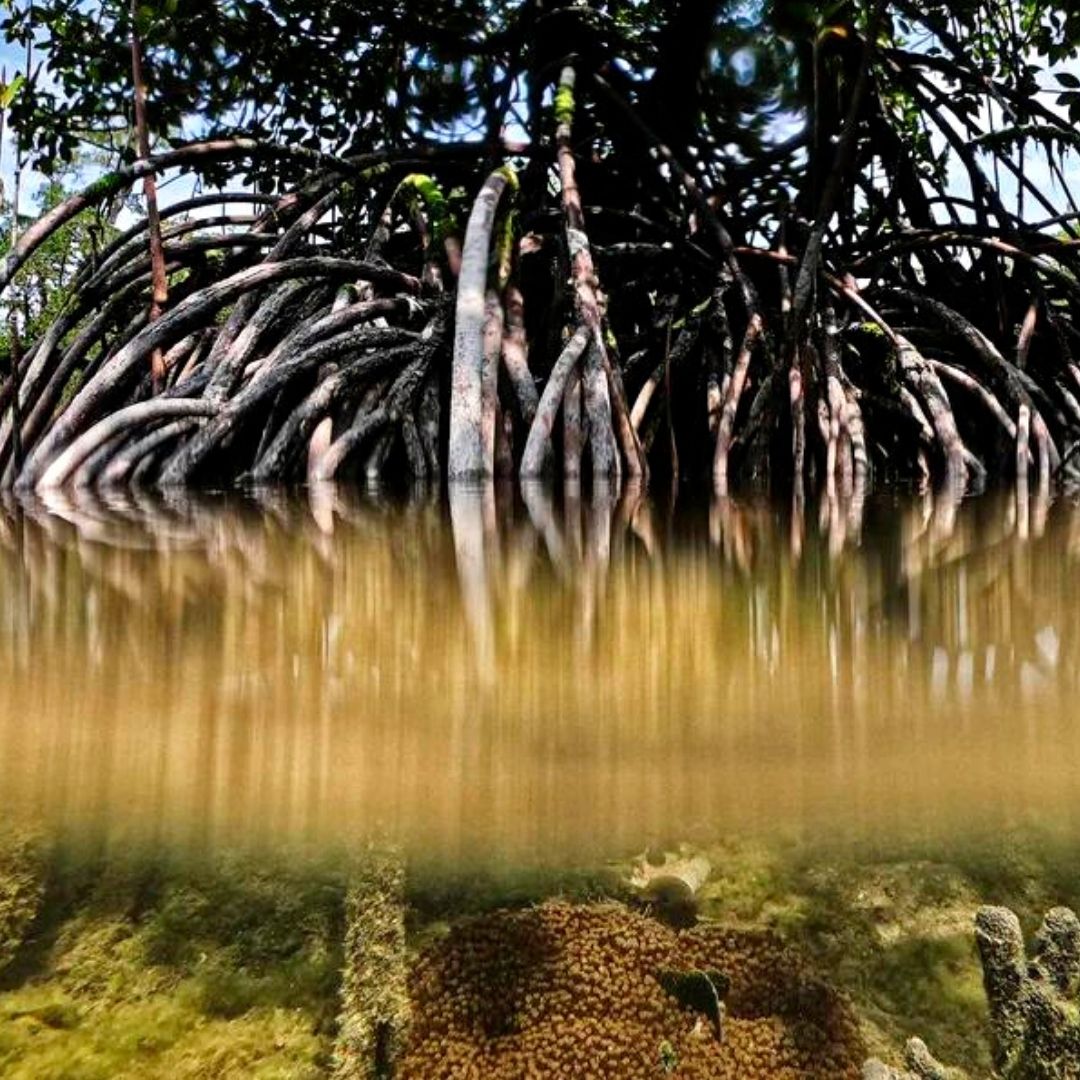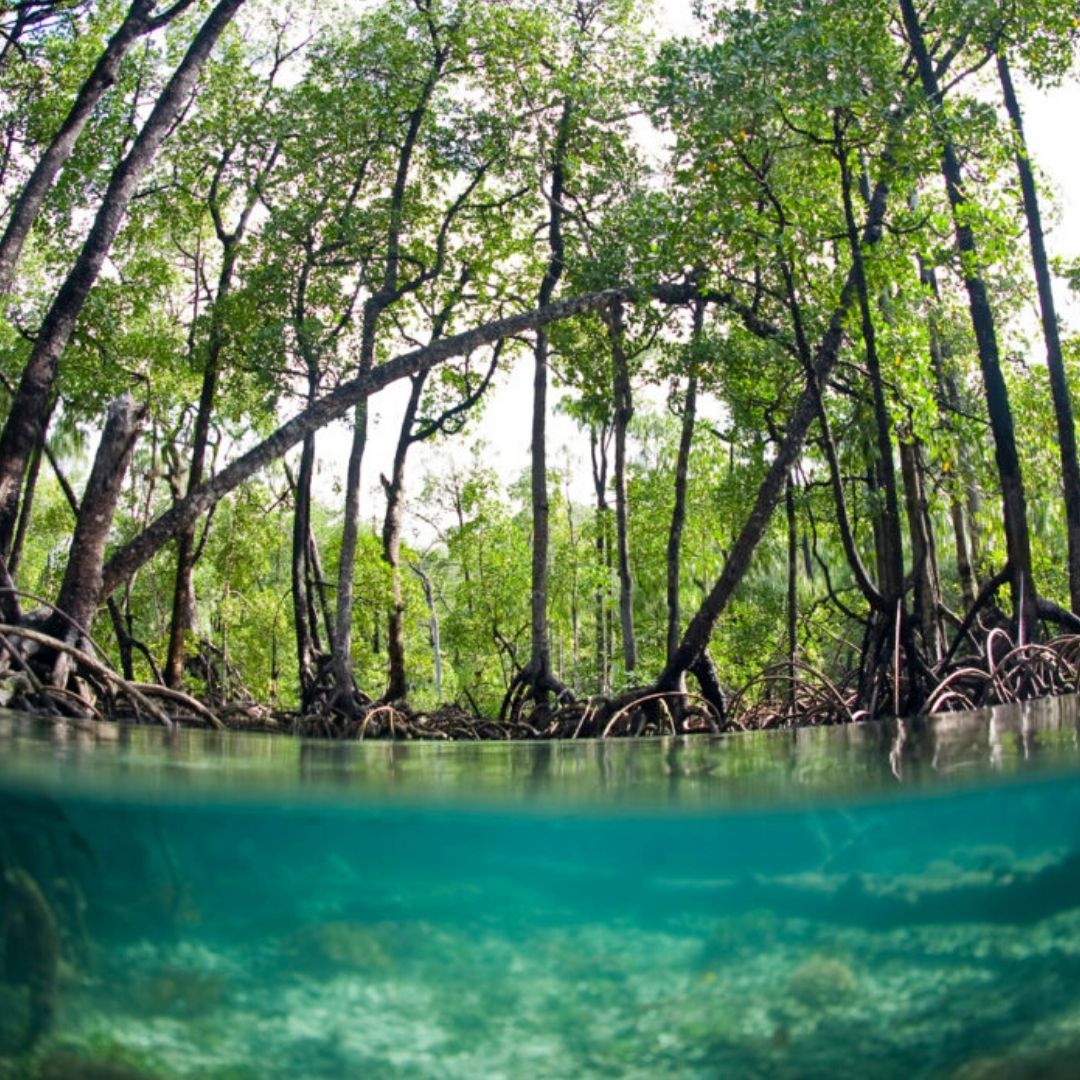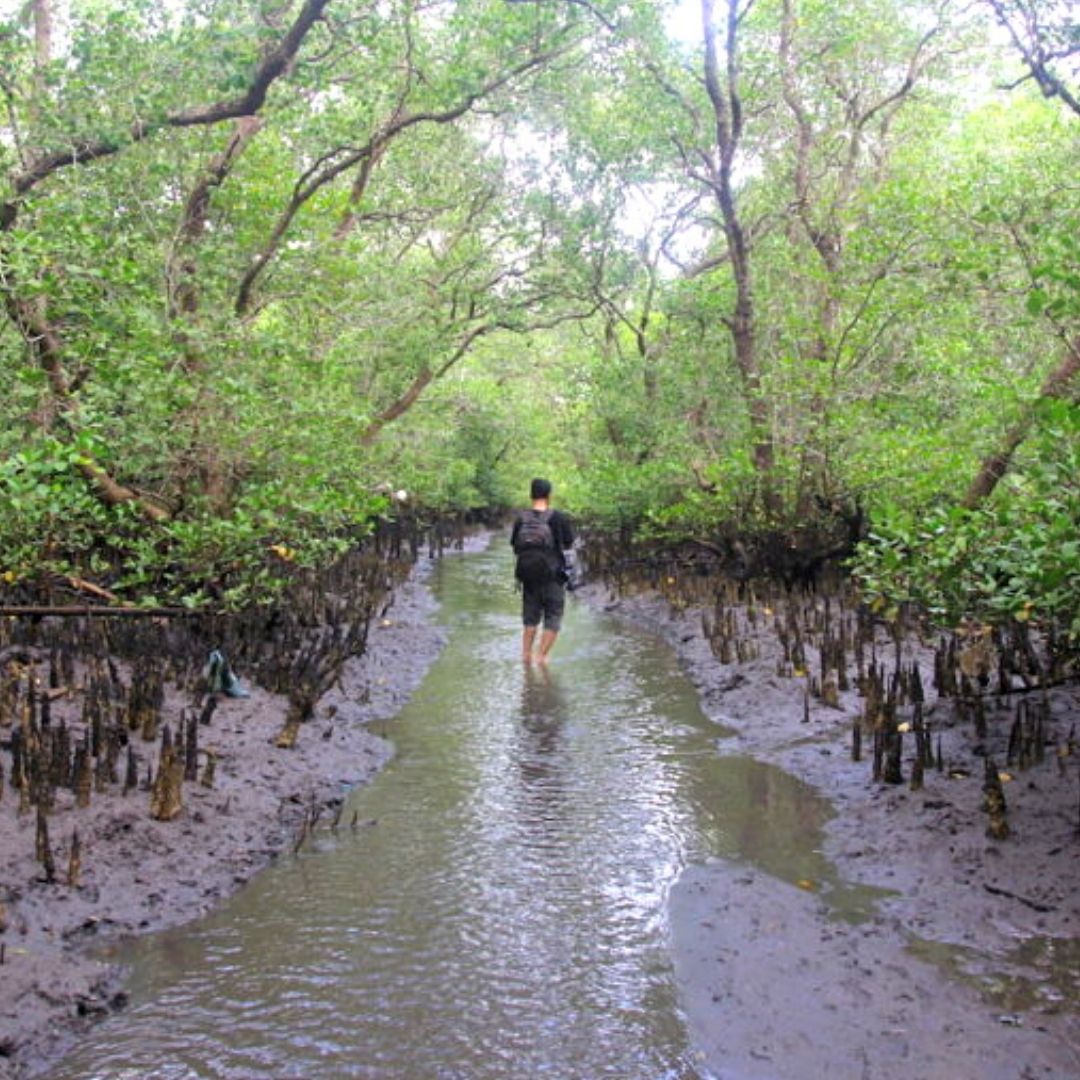Indonesia’s mangrove restoration program will help the Southeast Asian nation to reach carbon neutrality by 2060. Let’s find out how these ‘supertrees’ are becoming an important weapon in the fight against climate change!


Photograph: Ardiles Rante / Vox
Indonesia’s Mangrove Restoration Project
To reach carbon neutrality by 2060 or sooner, Indonesia has committed to a mangrove restoration project which will see 600,000 hectares (1.5 million acres) of mangrove forests restored by 2024. Last year, due to the pandemic, funds for the project were redistributed — resulting in only 34,911 hectares being restored. This year, Indonesia will restore 150,000 hectares of mangroves.
Indonesia is the largest archipelago in the world, which is why it’s home to more than a quarter of the world’s mangroves. These coastal ecosystems store 4-5x more carbon than tropical forests. As Southeast Asia’s largest economy — and one of the world’s biggest climate polluters — Indonesia is lagging behind on climate action. This mangrove restoration project will help the nation to reduce its net emissions over the coming decades.


Photograph: Ethan Daniels
Mangroves Absorb 2-4 Times More Carbon Than Forests!
When we think of natural ways to sequester carbon, typically, terrestrial tree-planting is the first thing that comes to mind. Yet, restoring mangrove forests is emerging as one of the most effective ways to store carbon — along with other ‘blue carbon’ marine ecosystems, like seagrass meadows and tidal marshes. These amazing ecosystems are capable of sequestering 2 to 4 times more carbon than terrestrial forests.
There are around 80 species of mangrove trees around the world, and all of them require very little oxygen to survive. Their roots have a special filtration system to filter out seawater. Aside from acting as a carbon sink, mangroves protect coastal areas from storm surges, tsunamis, and erosion. They also filter nutrients and sediments to maintain water quality, which allows fish, birds, etc to thrive!


Photograph: Anton Muhajir / Mongabay
Indonesia’s “Blue Carbon Economy”
As we begin to appreciate and depend on the amazing abilities of mangrove forests, more of these amazing ecosystems are being torn down. Sadly, Indonesia has lost 40% of its mangroves over the past three decades. As underappreciated ecosystems, people chop down the trees for timber — or clear them to make way for coastal development projects and aquaculture (fish and shrimp farms).
Shrimp aquaculture, also known as ‘tambak’, experienced a boom in the 1980s and 1990s in Indonesia due to favourable government policies. As a result, more than 800,000 hectares of mangrove forests were cleared between 1970-2003.
Preserving Indonesia’s mangrove forests — instead of clearing them — could store more than 150 million tonnes of carbon per year!


Photograph: Markus Gebauer
18% Of Australia’s Coast Is Lined With Mangrove Forests
Did you know that Australia has the second-highest area of mangrove coverage in the world? More than 11,000km, or 18% of Australia’s coast is lined with mangroves! They’re home to an incredible array of species — like fish, birds, snakes, spiders, flying foxes, and even salt-water crocodiles.
Yet, around 17% of Australia’s mangroves have disappeared since European settlement. This has mostly occurred due to coastal developments, a decline in water quality, aquaculture, and human impacts like fishing, off-road vehicles and littering.
Mangroves and other blue carbon ecosystems play an incredibly important role in maintaining coastal and oceanic health. Australia is home to more than 11% of the world’s blue carbon ecosystems — meaning protecting mangroves, is critically important in the global fight against climate change!
Mangrove forests are pretty amazing! We’re glad to see that Indonesia is committing to restore more than 600,000 hectares of mangrove forests by 2024. Restoring these ecosystems will protect coastlines and safely store carbon for thousands of years.
To read about more climate solutions just like this, check out our Eco News category and the blogs below.
Sea Otters’ Destructive Digging Habit Is Boosting Oceanic Health
Charles Darwin’s 150+ Year Old Discovery May Help To Combat Climate Change
UK’s Largest Seagrass Restoration project Will Absorb Carbon 35x Faster Than Rainforests

